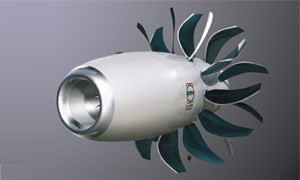The aviation industry, the environment and the future
Forecasts of the aerospace industry shows a clear positive trend. Air traffic is expected to increase steadily during the upcoming decades and be three times larger in 2050 than today. This will be positive for the global economy and allow greater mobility among the world’s population. However, the increase in air traffic is not entirely beneficial, but also brings negative consequences in terms of increased environmental stress. Therefore, we must work proactively and find solutions that are good for both the environment and the air traffic.
Air traffic accounts for about three percent of the total emissions of greenhouse gases, but may account for a significantly larger share in the future because of the estimated growth. In order to reach the environmental goals of not increasing the average temperature by more than two degrees above pre-industrial levels, vigorous actions must be taken. The options available are either to reduce demand through emission charges and other market measures, or to reduce emissions through more fuel-efficient aircrafts. The latter alternative is preferable because the former can have a negative impact on the entire aviation industry and for example on the tourist industry. To accelerate the pace of innovation within the aviation industry and reach closer to the goal of fuel efficiency, the European Commission has introduced a program called Clean Sky 2, which GKN Aerospace is involved in.
Clean Sky 2 is a collaboration between the public and private sectors and aims to create technologies for quieter and greener aircrafts. The goal of the program is to reduce CO2, NOx and noise emissions by 30 percent compared to current levels. To achieve this goal, research and development is carried out on both the aircraft structure and engine. Concepts developed include laminar wings and open-rotor Aircraft Engines. Part of the development of the latter technology is done here in Trollhättan.
An open-rotor engine is simply described as a jet engine without a fan case. This enables the use of longer turbine blades and thus provides greater and more efficient airflow through the engine while the weight of the engine itself can be reduced. However, the removal of the fan case means less noise reduction and a greater risk of damage of the airframe in case of a released blade. Engineers are working feverishly to get around these problems, and tests show that we are already on the way of solving the issues. I am sure that we will succeed in developing the technologies required to achieve the set goals. It will not be easy, but through cooperation and passion, innovation will reach new heights and result in a flying future.

© Safran